Advising Google on ‘Where to Play’ in the Merchant Ecosystem
Type: Research | Role: Lead Researcher | Design: Platform/Ecosystem | Duration: 2 Months
To comply with the non-disclosure agreement, I have omitted and obfuscated confidential information. All info in this case study is my own and does not necessarily reflect the views of Google.

The Challenge
Google was a little late to the Merchant Tools space, especially in terms of how other players in the space had started to consolidate their products and services into platforms or ecosystems.
Google needed to understand merchant expectations of a merchant ecosystem experience as well as frameworks to break down and assess other players in the space, to know where to differentiate.
My Role
I led the research of the project with 2 other designers.
I served multiple roles as the merchant researcher, team facilitator, content strategist, and presented the collaborative work done by the team to Google Merchant’s Senior Leadership .
Analyzing & Visualizing the Competitive Platforms/Ecosystems
Many of the players in the space were platforms, with multiple products and offerings. While it was critical to explain the details of individual products and features during analysis, it was also important to view them at a systems level.
We focused on the interplay between Merchant Tools and Consumer Products by visualizing the products & platforms so that we could review and discuss competitors at both the forest, and the trees level.
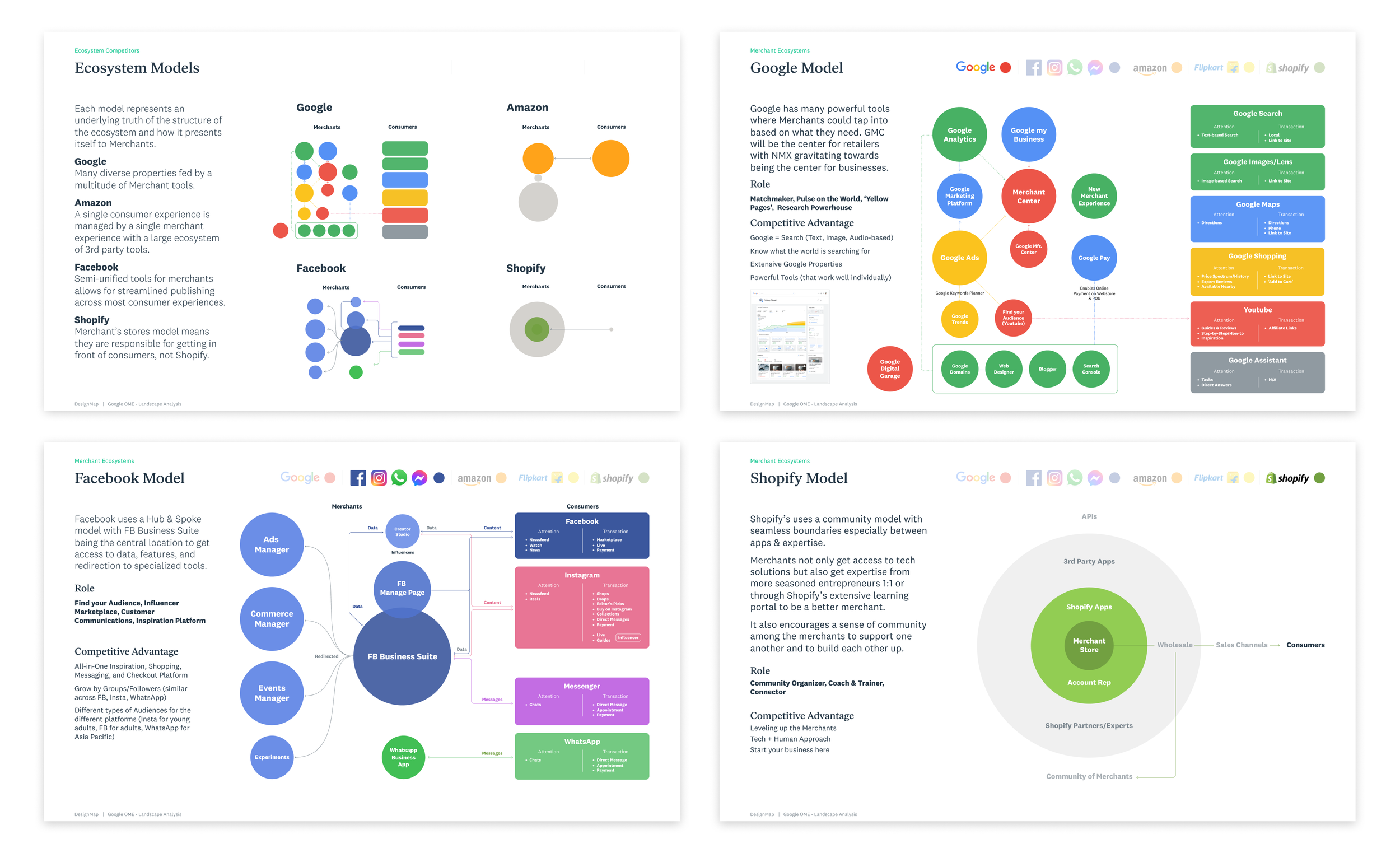
Assessment from an Ecosystem Perspective
While Google Merchant recognized the need to become an interconnected ecosystem and platform, there was no universal heuristic to describe a good ecosystem.
We developed an ecosystem rubric from our competitive research that allowed Google to understand what to aspire towards and to use that same lens to compare the different players and identify areas where competitors were best-in-class.
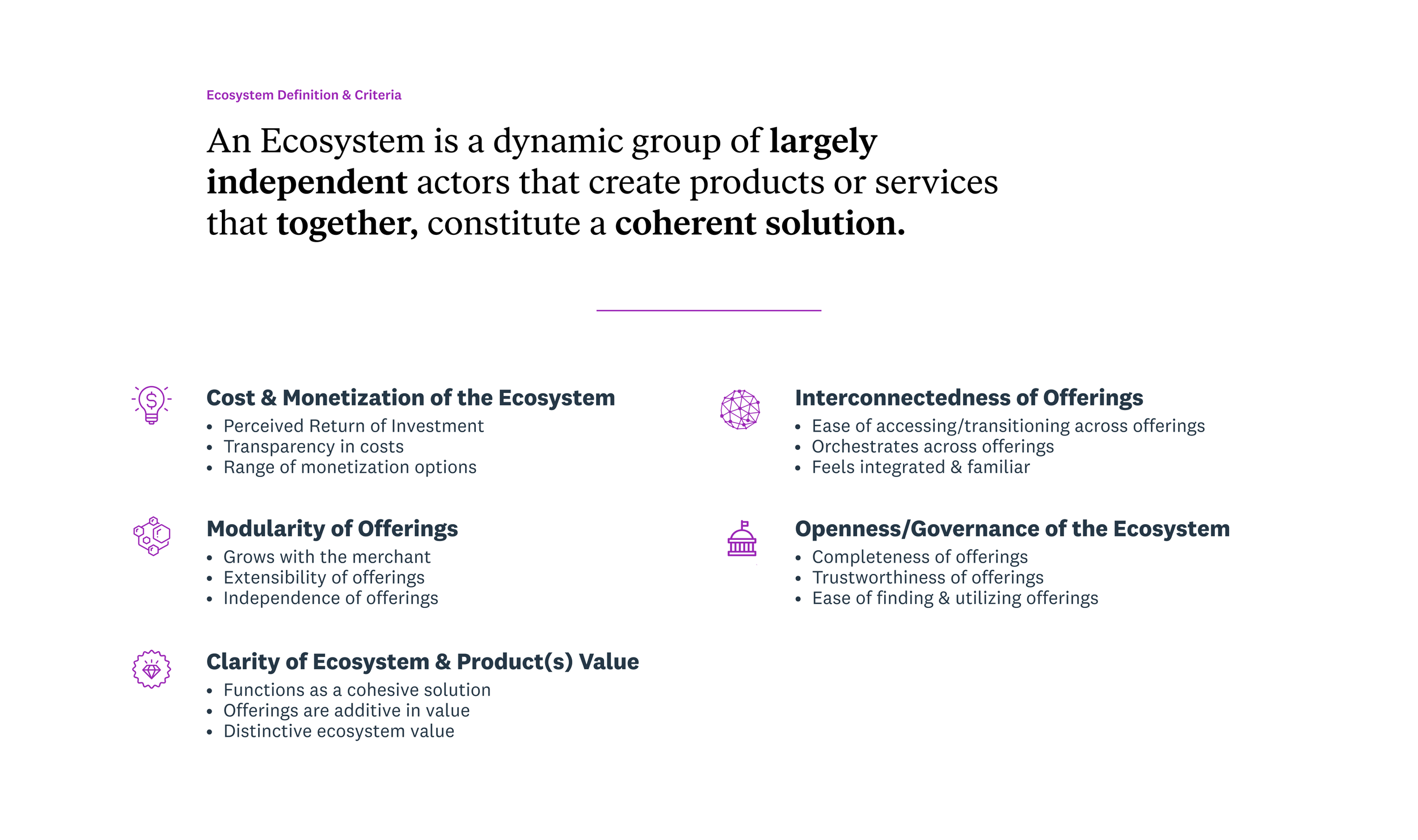
Snippet of the competitive research shared with Google Merchant leadership
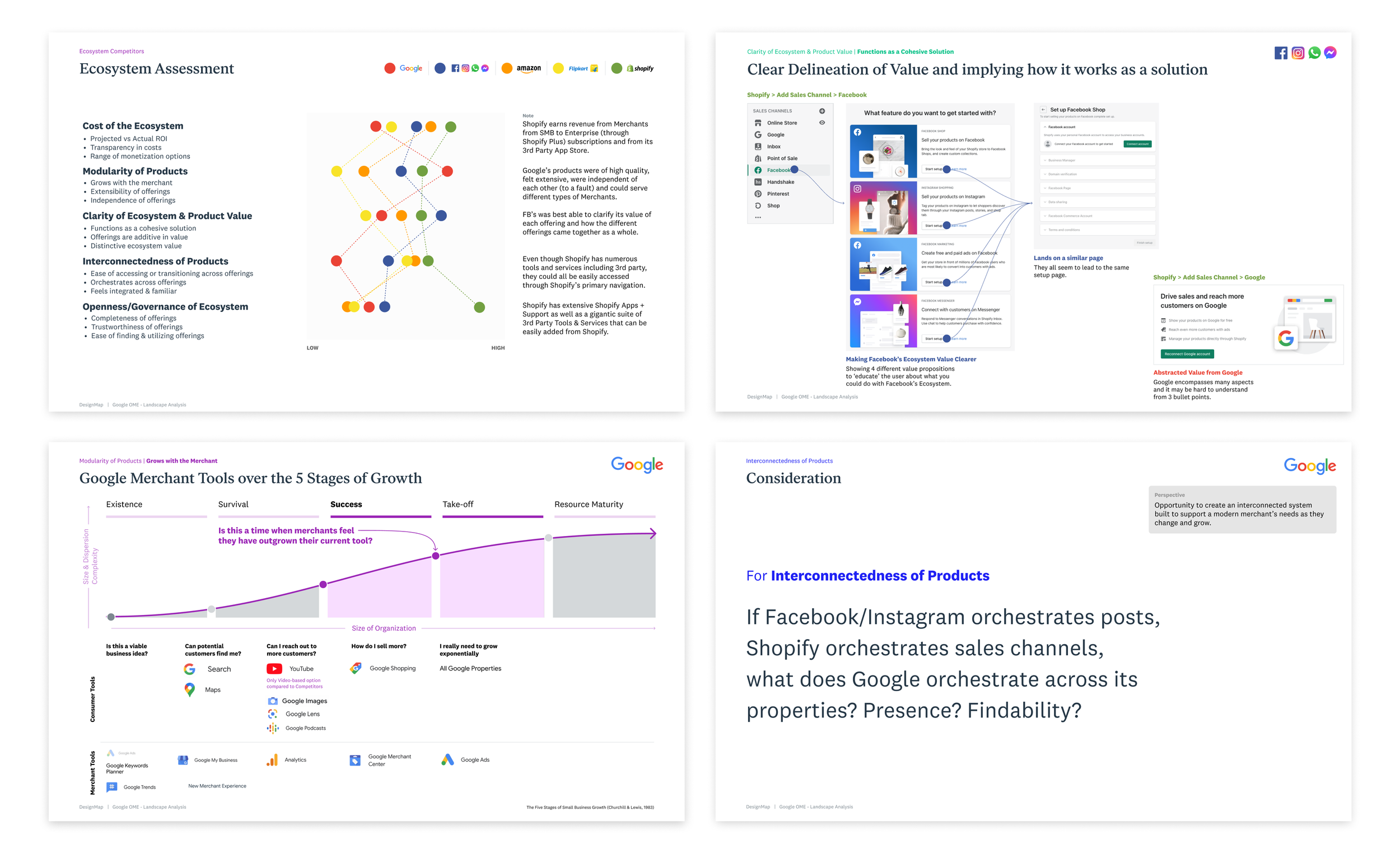
Merchant Jobs-to-be-Done Relationships & Focal Areas
A different framing of the analysis used Google’s 12 discrete merchant Jobs-to-be-Done (JTBD) to orientate their organization to better serve merchants. We assisted the team to highlight the hierarchy and relationships among the Jobs to help decide which JTBD to focus on.
Combined with data from other research tracks within Google, we identified ‘Establish Brand Presence’ as a key JTBD.
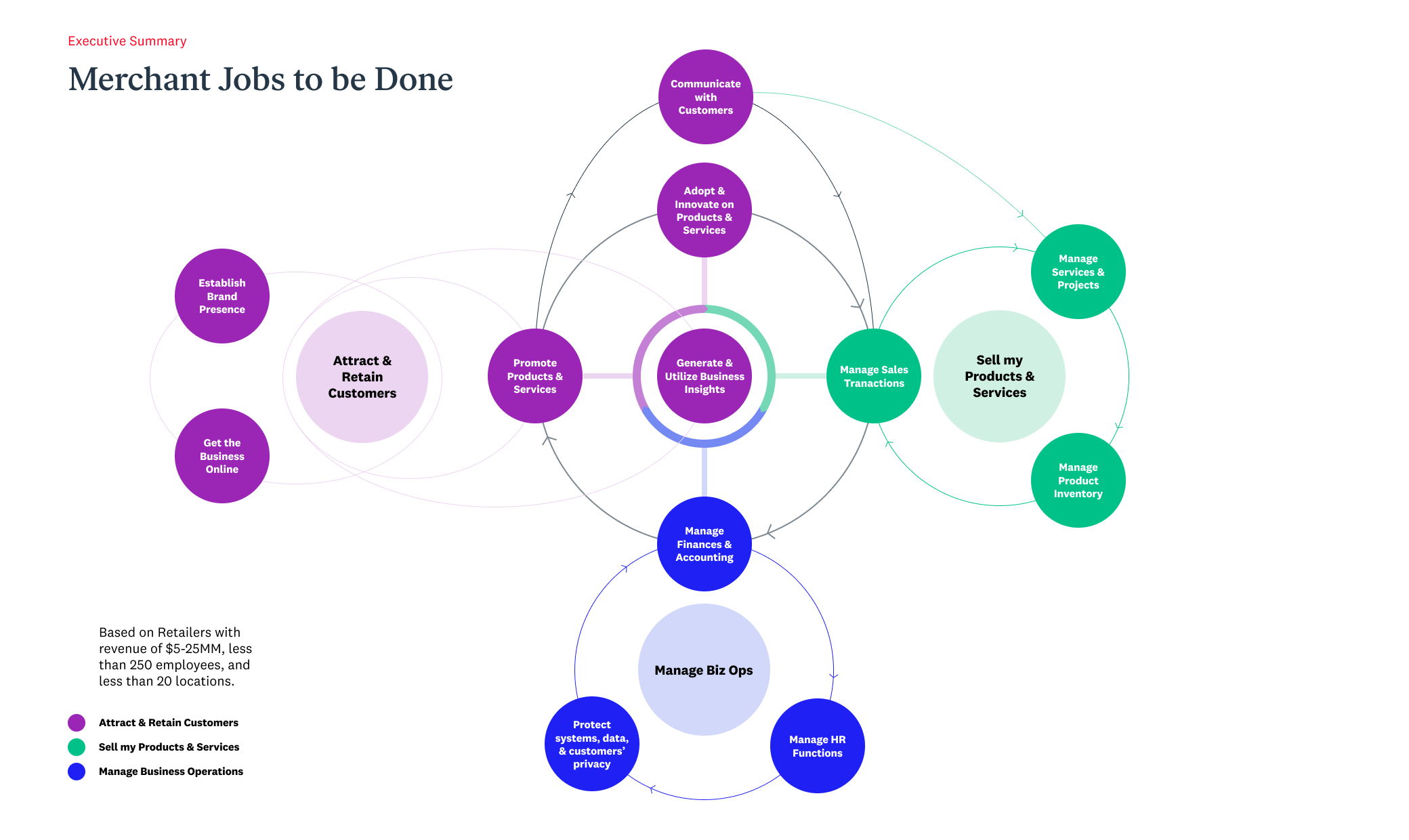
‘Establish Brand Presence’ Assessment & Rubrics
We looked at various merchant brand tools that enabled merchants to establish their brand presence which included integrated platforms as well as specialized tools.
Utilizing learnings from these tools, we formulated a ‘Establish Brand Presence’ criteria to better understand the intent these tools played in satisfying this JTBD.
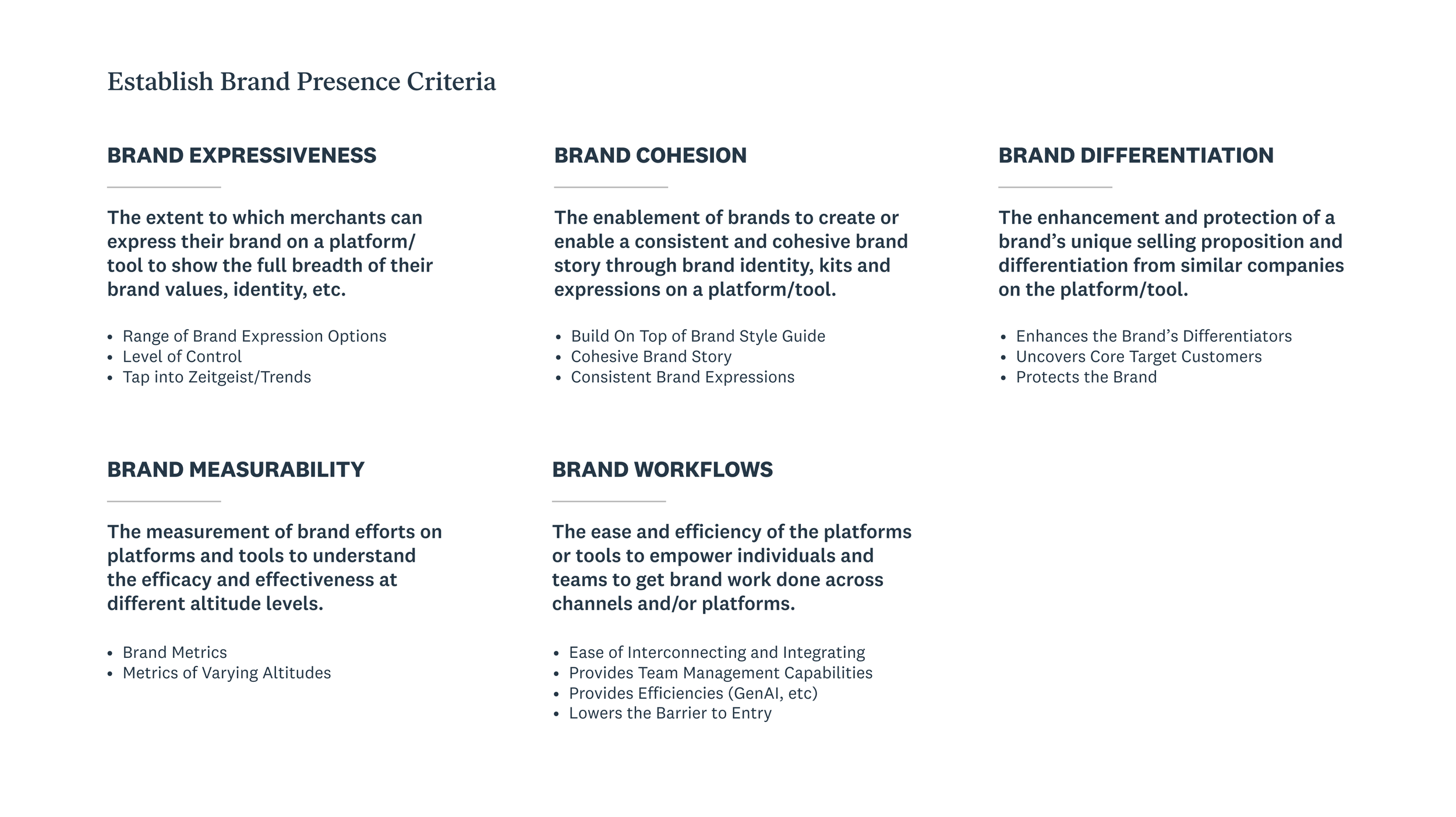
Snippet of the overall report shared with Google Merchant leadership

‘Where to Play’ Recommendations
We utilized the Brand Rubrics to assess different players in the space and to identify specific opportunities for Google to play in the brand space for merchants from both facets of differentiation and parity. The following is an example of the strategic recommendation to Google Senior Leadership.
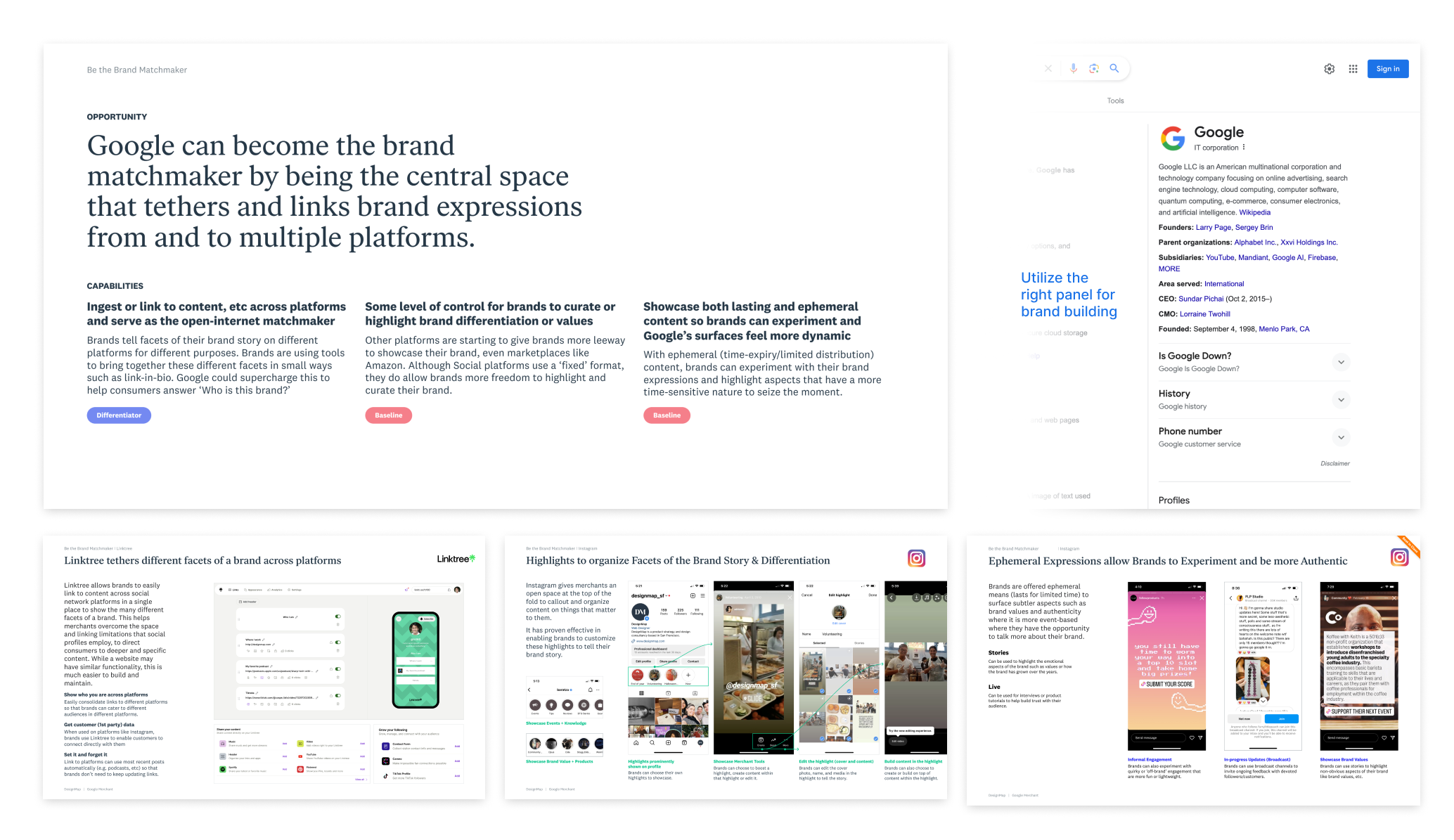
Outcomes & Reflections
Our findings and recommendations were presented to Google Merchant’s Senior Vice Presidents and used in their strategic planning sessions.
This was a mentally intensive project that required strategizing at the highest level. While it was challenging in the beginning, especially with Google’s expansive and deep research trove, I found a sweet spot of leveraging outside-in viewpoints and past experience of designing platforms to provide a distinct perspective.




